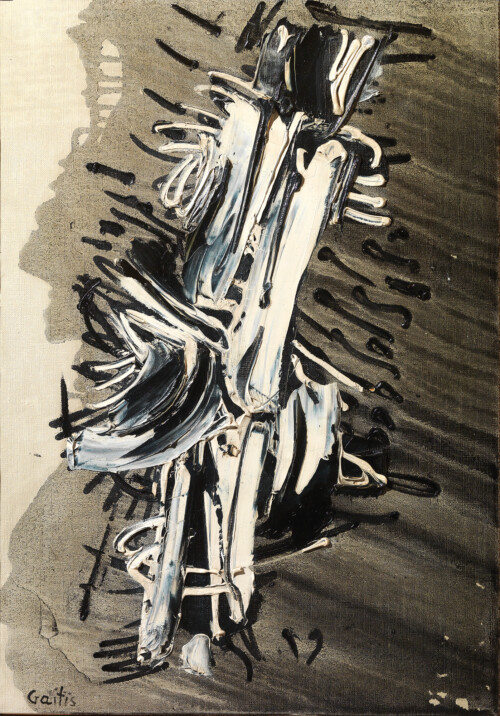| 16 |
Greek, 1923-1984
Untitled
oil on canvas
signed lower left
55 x 38 cm
PROVENANCE
private collection, Athens
LITERATURE
Yannis Gaitis, Catalogue Raisonne, Angers, 2003, page 172, image 542, illustrated
| sold for 4 124.75 € |
Yannis Gaitis was born in Athens in 1923.
In 1951 he graduated from the School of Fine Arts, Athens and three years later he moved to Paris to continue his studies at the Ecole des Beaux-Arts and the Academie de la Grande Chaumiere.
In Paris, he became familiar with the international modern movements and mixed in European art circles. His work in the early 1960s is mainly abstract gestural painting. Few figurative images appear during this period.
Gradually, however, he shaped his most distinct feature, the little man (anthropaki), the trademark of his new, entirely personal, neo-figurative painting, which made him well-known internationally.
His identical little men (anthropakia), firstly presented in 1967, symbolise middle-class propriety and alienation. This subject matter dominated his work from that point onwards in more mediums than painting, such as timber constructions, utilitarian applications or artistic happenings.
In 1971, the painter’s little man starred in the film ‘Gaitis le Baladin’ in collaboration with director Serge Bergon.
Gaitis’ work gained enormous popularity, thanks to his peculiar artistic idiom, his outstanding productivity and his persistence to bring his art into contact with the broadest possible social strata in every way imaginable.
Throughout his career, he exhibited extensively in France, Italy, Germany, Brazil, the Netherlands, the United States, Austria, Serbia, Belgium, Switzerland, Cyprus and in Greece, to where he returned permanently in 1974.
He died in Athens in 1984, a week after the opening of his major retrospective exhibition at the Athens National Gallery.
His works are found in many public and private collections in Greece and abroad, notably: The National Gallery, Athens, the Athens Municipal Gallery, the Rhodes Municipal Gallery and the National Bank of Greece Cultural Foundation.
